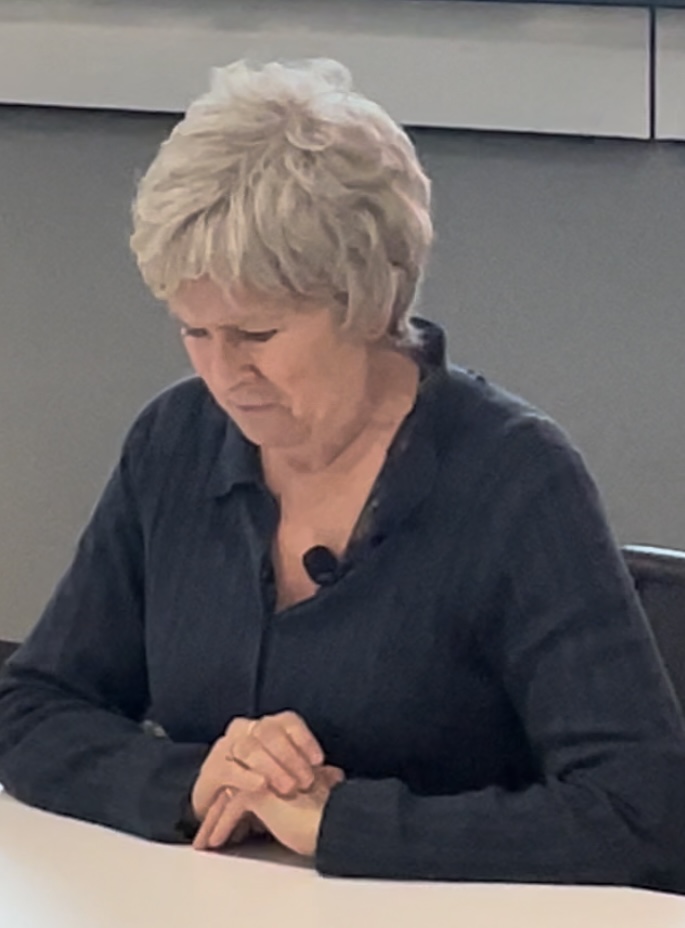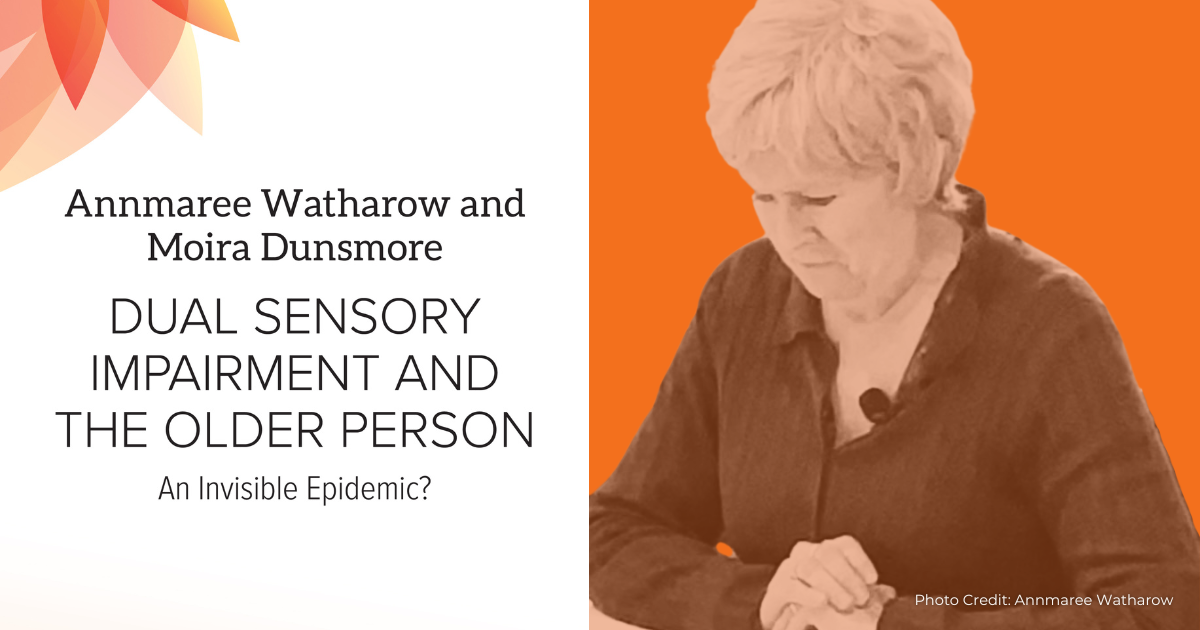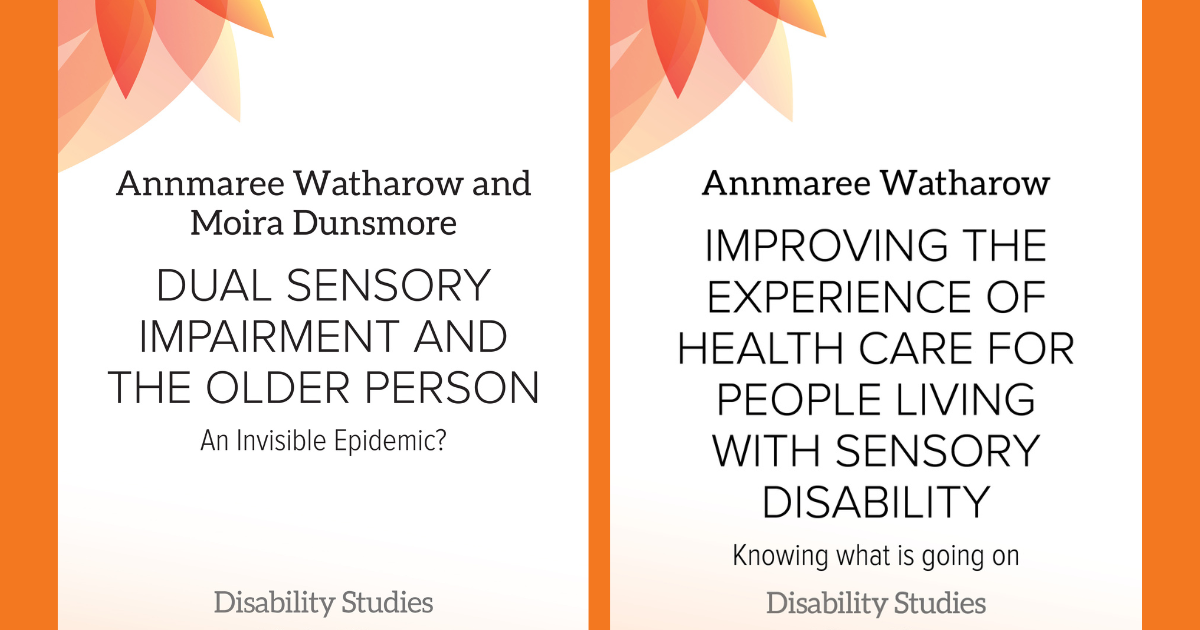Older people with combined hearing loss and low vision, also known as dual sensory impairment living in residential aged care facilities are a forgotten group. Hearing loss, vision loss, loneliness and a rapidly ageing population are global concerns. But older people with dual sensory impairment are left behind by policy absences and low levels of knowledge and skills in professionals and practitioners charged with their care.
Sensory losses are common in older age. Very common. In Australia, hearing loss affects 66% of people over 60. Low vision not corrected by glasses impacts around one-third in older age. Dual sensory impairment affects at least 8:1000 Australians (Survey Disability, Ageing and Carers, 2018). This number is an underestimate, as not everyone recognises they have a distinct disability named dual sensory impairment; not everyone gets a diagnosis; and many are hidden and uncounted by data collection methods. Some of these hidden groups include prisoners, homeless and those with other disability where the sensory losses are overlooked or misattributed. The numbers impacted are growing as the global and national populations age.
 For individuals living with dual sensory impairment life can be very difficult. Lucy is in her eighties and has presbycusis (hearing loss associated with older age) and age-related macular degeneration (the most common eye condition in older people causing low vision or blindness).
For individuals living with dual sensory impairment life can be very difficult. Lucy is in her eighties and has presbycusis (hearing loss associated with older age) and age-related macular degeneration (the most common eye condition in older people causing low vision or blindness).
“I don’t particularly want to mix with people. Too hard. Too hard and because they can’t understand. I can’t walk into a room. I see nothing and I can’t find my seat and I can’t recognise people. It’s really hard to listen. No, not hard to listen but to hear. I try to work it out, but none of it makes any sense, you see. I know it’s just old age, but I’m finding it all difficult. I do feel bad when everyone has invited me out to their houses, but I can’t invite them back because it’s too tricky to make a cup of tea. I worry I might scald myself. And I do burn myself making biscuits. So, I’ve stopped all that cooking. And bridge! I loved bridge. We weren’t often beaten, Walter and I, but when I went on my own, I started to offend people because they don’t know about the bad ears and eyes. I look the same I take it, and they forget. Everyone forgets. You might have told them, but they forget…naturally…and the women that I have known at the club for years – well I find that I wouldn’t recognise them. I know what they’re thinking. She’s snobby now. They’ve all forgotten. You see they’ve forgotten that I am not able to see them. So, I finally thought, I’ll give it away. But once you give it away you lose contact. I keep away from people. I’m all right one to one, but I don’t like going out anymore because I can’t keep in the conversation. I can’t hear it…..I don’t want to be a bother.”
Those in residential aged care facilities (sometimes colloquially known as nursing homes) often do not have their sensory losses recognised or diagnosed. Older people may believe their difficulties seeing and hearing are just part of ‘old age’. Professionals and practitioners are too busy dealing with other chronic conditions and don’t often know how complex communication needs can become nor how complicated most activities of daily and social life.
Living with dual sensory impairment in residential aged care is troubling. Seraphina calls it “aged-no-care”, Victor calls it “neglectful”, and Violeta says, “I hate my nursing home”. For people with dual sensory impairment “aged-no-care” is tough as they usually don’t have a communication partner and staff have low levels of awareness of their needs.
Aged Care Facilities… or “Aged-No-Care?”
If there is cognitive decline as well, staff may consider there is no point even trying to communicate. We can see an example of this in the following scenario.
Alan is in a “home”: his daughter, Gladys, has come to visit this morning and she is frustrated that he doesn’t have his hearing aids in…again: “The catch is”, says Gladys, “someone has to put them in, as he doesn’t remember. And you know, when they do remember, the batteries are usually dead”. She continues, “I am convinced that the staff here, lovely as they are, believe that there is no point putting them in when he has dementia. But really, he needs all the information he can get, however he can get it, to make whatever sense of whatever he can. It is more important now than before. My mum used to spend a lot of time orienting him and supporting his social conversations, but when she died that all stopped. We had thought that being here, this support would continue. We were wrong”.
The combination of hearing loss and low vison from any cause and any severity, means that one sense is not able to compensate for the other. This leads to complexity in:
- – Communication
- – Access to information
- – Orientation and mobility
It means increased risk of functional decline, social isolation, falls and accidents, visual hallucinations, delirium, depression, anxiety and stress in their carers. There is also a growing body of evidence of an association between unremediated sensory loss/es and cognitive decline. This means older people with dual sensory impairment in care homes may be less happy, less safe and less healthy.
We can do so much better to provide good care and communication to our older citizens, from simple communication strategies, tactile messaging systems and assistive technologies. We need to talk with our older residents and ask: what are their needs and goals? Sometimes just attention to simple communication strategies: face the person; talk at a moderate pace; ensure there is no glare facing the person; and repeat critical information. If we have an accent or the person is not understanding, pivot to another method such as black pen and paper, a marker and a whiteboard (small personal whiteboards can be found at $2 shops) speech-to-text on smartphones and tablets or the use of personal amplifiers. Large print text may be needed or very large print even.
Longer-term strategies may involve hearing aids, white canes, walkers and assistive technology. It may be useful to explore tactile communication methods such as the deafblind manual alphabet and social-haptics communication where there is on-body messaging. Touch becomes a conduit of information for many. Sometimes a tactile method is useful to provide context that can keep a person with dual sensory impairment engaged in social life. Captioning on television and devices may help many with some useful residual vision. It is very rare for people to have no hearing or vision at all, so harnessing the residuals one has becomes important.
So how do we sow the seeds of awareness in residential aged care facilities when there is limited funding? How do we make a difference in those most hidden spaces? We wrote a book: Dual Sensory Impairment and the Older Person: An Invisible Epidemic? But writing the book is not enough. The book can’t walk into the care facilities on its own. So we came up with the pay-it-forward scheme where members of the community can donate a book that we send to a care facility.
In Australia, there are 2700 such places, oubliettes with at least one to two thirds of residents living with sensory losses. So book by book, facility by facility, we are getting a resource where it is most needed. And maybe no one will read it at once, but maybe a carer will pick up the book from a shelf in the office and find some useful information and strategies and supports that foster greater awareness of some care and communication needs of their residents. If you want to pay it forward and donate a book or two to a residential aged care facility, go here: https://livedplacespublishing.com/book/isbn/9781915734358 [click “Gift this Book”].
Annmaree Watharow MD, PhD has a medical degree, a Masters in Psychological Medicine, and a PhD on the hospital experiences of people living with sensory disabilities. Her current research and advocacy centres around improving accessibility, communication, care, and outcomes for people living with disabilities, especially in pandemics. She has lived experience of disabilities.
She has two books with Lived Places Publishing:
- Dual Sensory Impairment and the Older Person: An Invisible Epidemic? (co-authored with Moira Dunsmore)
- Improving the Experience of Health Care for People Living with Sensory Disability: Knowing What is Going On
We want our books to be available to as many people as possible. If you’d like to purchase an individual copy, please email us and we’ll give you a discount code:
HEADER IMAGE CREDIT: “Lucy” by Annmaree Watharow




